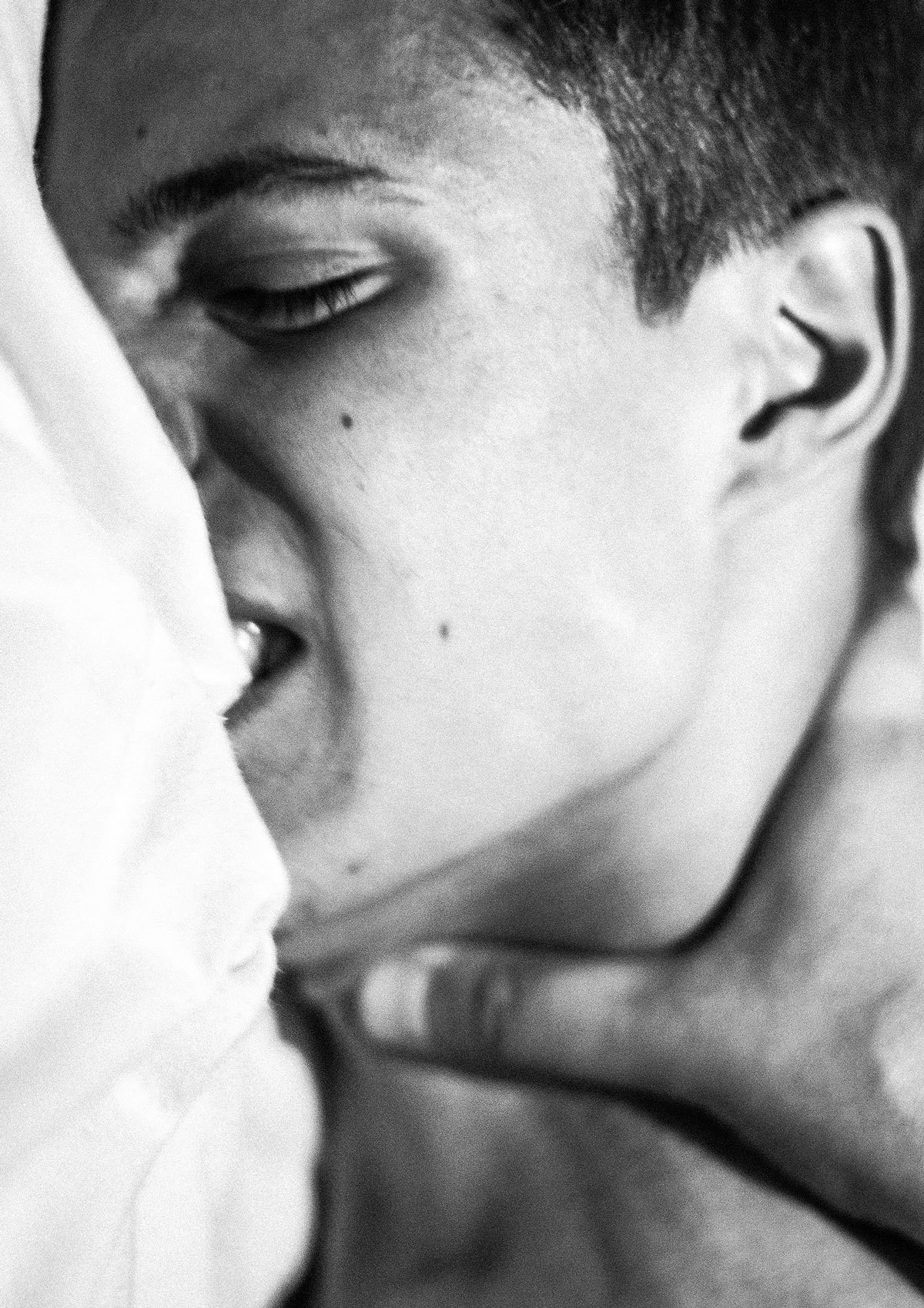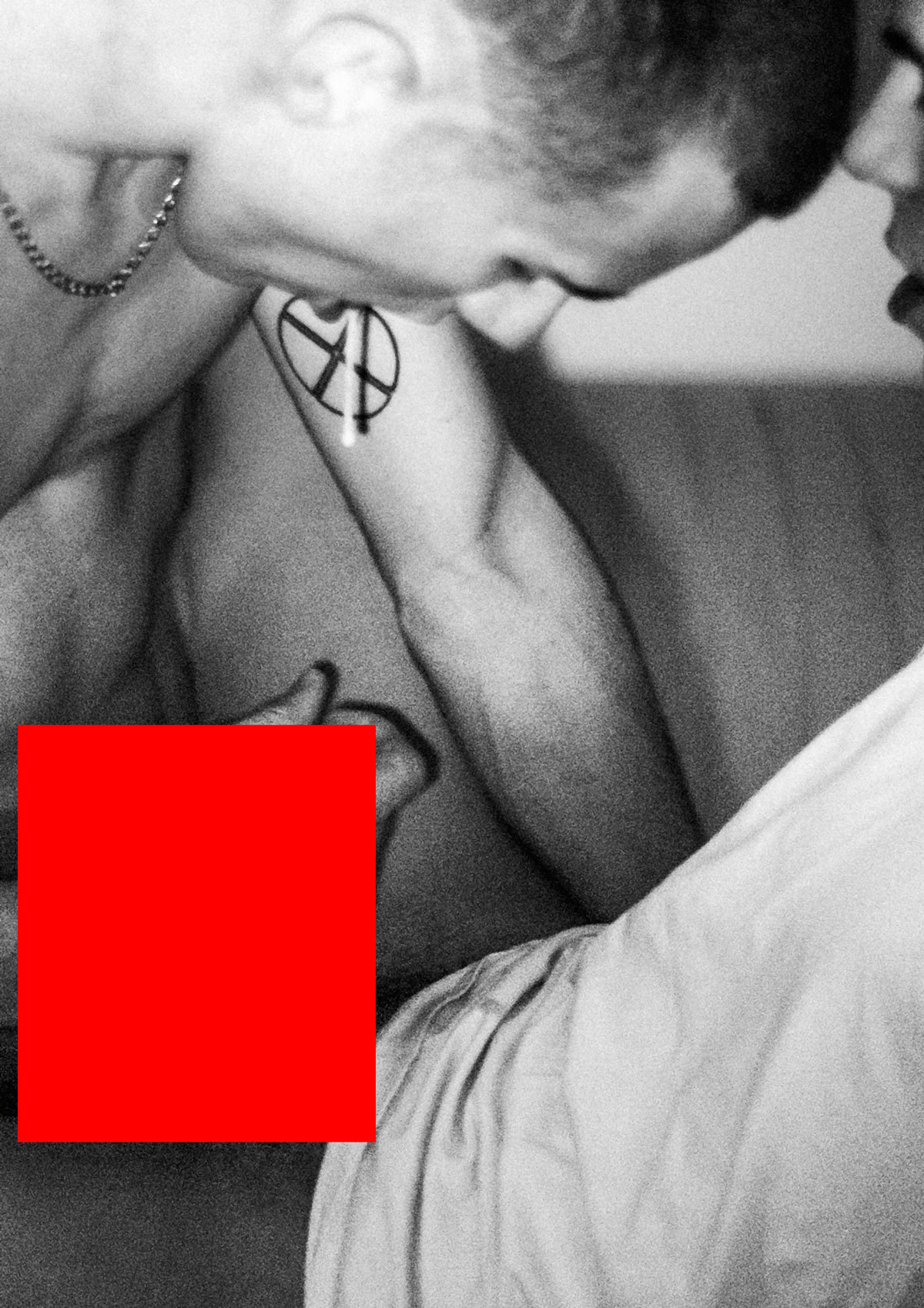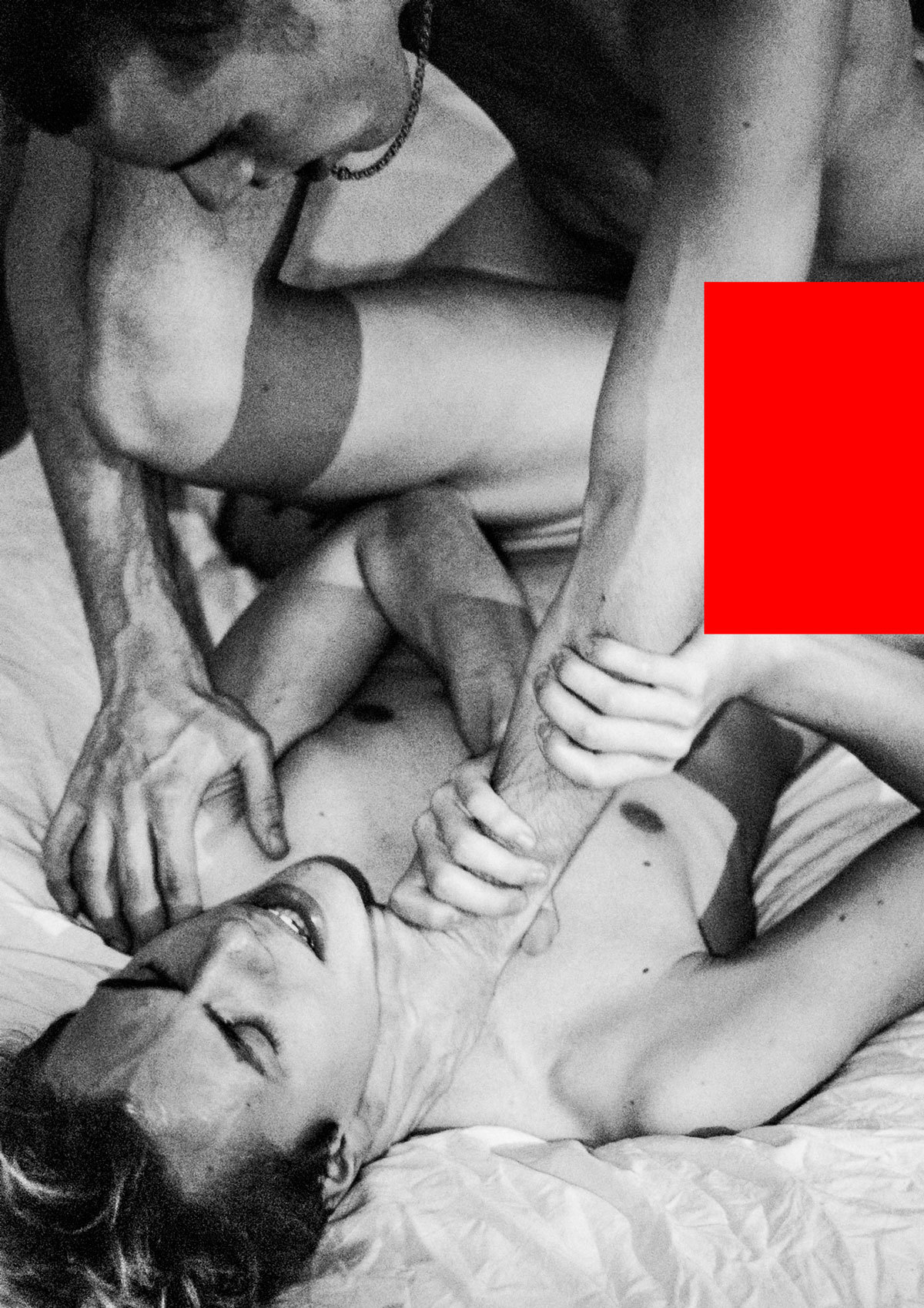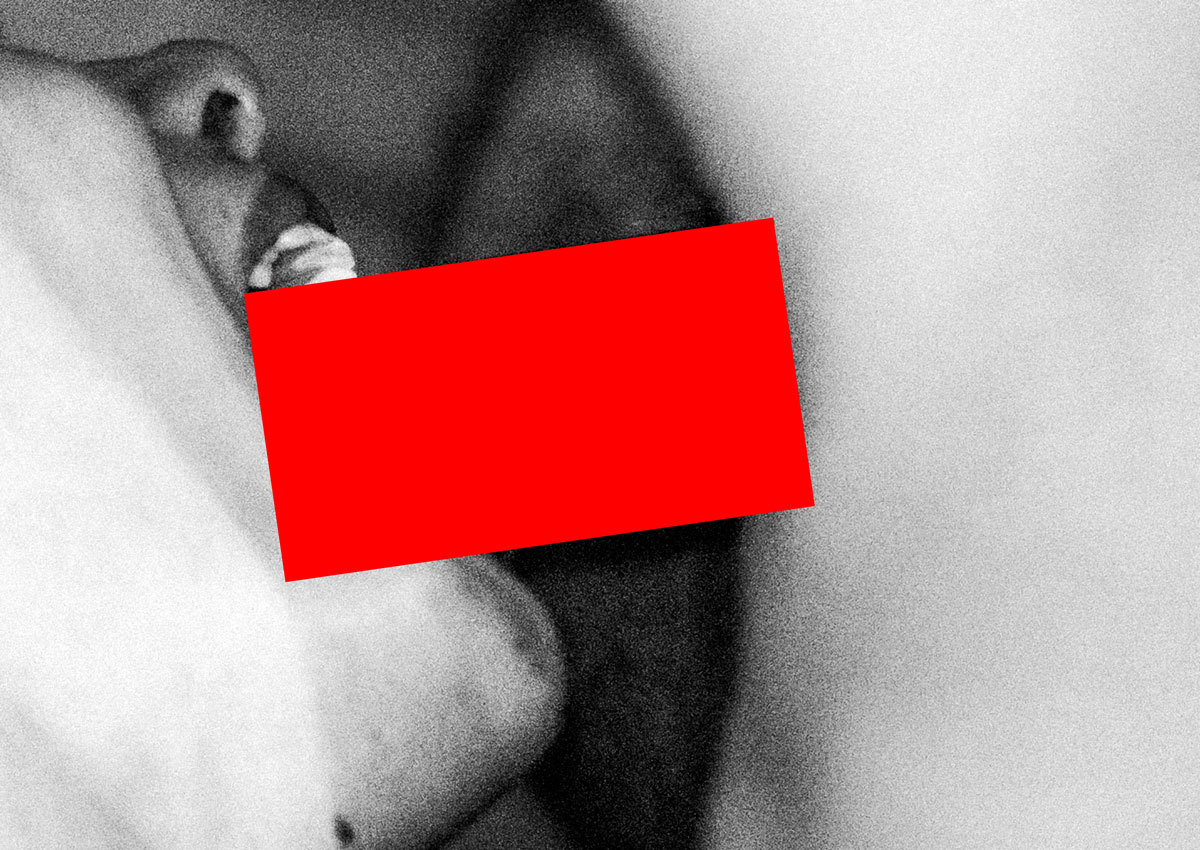Punk was founded by the oppressed and disenfranchised, a cultural movement spawned from social and political unrest of the mid 70s. In its wake it redefined all elements of society, leaving nothing untouched. From art to fashion, punk changed everything — including gay culture. Queercore was an offshoot movement of revolt, taking punk’s underground attitude and turning it towards issues relevant to queer people. Hetero-macho definers of punk were ditched and opposed, stimulated further by society’s contempt for the LGBT community.
Matt Lambert and Jannis Birsner have captured this moment in time in their new zine, VITIUM. Boys are snapped playing and connecting — lustfully and lovingly — with one another in moments of unvarnished sincerity, and without the heteronormative overhaul — homo themes and subjects warped with puritanical ideals purporting to represent the LGBT community. They contextualize the publication’s themes within the current social and digital landscapes and it exposes a procedure of censorship, control, and manipulation over instinctual interaction.

What drew you to the queercore scene?
Matt Lambert: It was more the aesthetic and the raw energy of the imagery that lives with it. I grew up in LA in the 80s and 90s and as a young kid, the punk scene and its direct and emotionally charged visual language was one I felt intensely connected to. However, there was still something a bit exclusive about it. Then in college, I discovered queercore and people like Bruce LaBruce, Vaginal Davis and the music bands like Pansy Division were creating. A few years later I also worked a lot with a group called Bare Bones in London, we made a punk newspaper and put on massive multidisciplinary exhibitions. With VITIUM, the only way to present this work was to steer as far from fashion as we could and play more to the world of indie smut mags and homemade fanzines. We wanted it to be about the world and the guys living in it rather than the photography. We wanted it to feel raw, pure, intimate and a bit forbidden.
Jannis Birsner: We also wanted to reference zines like Bound and Gagged and S.T.H. I liked the idea of recreating a pre-internet platform for a group of people that share a “sinful” — by society’s standards — interest.

Using a zine format is like a triple “fuck you:” to the hetero-hegemony, to social media, and its censorship practices.
ML: Most the platforms like Facebook or Instagram are so censored these days. Tumblr has become a porn dump and an empty fashion moodboard.
Social media has just allowed censorship to practice with complete impunity. VITIUM is an unabated, hardcore, sex-infused “fuck you” to the communicative establishment.
ML: People are so willing to share these days, but not really share honestly nor show real intimacy and sexuality. There are of course some amazing people on Instagram pushing boundaries, but there’s so much empty and non-committal content. Bruce LaBruce or the next generation like Slava Mogutin, Gio Black Peter, Brian Kenny, were and are unapologetically autobiographical. Their fetishes are part of the process and they even often put themselves in the work.

And this unapologetic conduct and content mostly stems from the 80s, you think? We incessantly celebrate that era’s boundary-breaking achievements.
ML: I’ve recently started working in the fashion space as well. It’s been the most logical place for me to work commercially. However, when I look at the filmmakers and photographers around me I see so much brand fetish. Independent art projects and collectives are gagging for brand partnerships, independent magazines want to be bought by Condé or a Hearst, those that are still independent are more and more beholden to their fashion advertisers. Brand money used to be dirty. Now it’s the co-sign that many photographers crave to have any validity. It means feigned authenticity. It means chasing the market rather than making it work for you.
VITIUM pushes back on the heteronormative messaging prominent in society — fashion particularly.
JB: It’s weird to see gays take on the behavior they’ve learned from fashion, which stems from other gays terrified of the organic expression of their sexuality. They hide behind art that sterilizes sex, which I blame the straight male for. The idea of a young gay expressing who they are seems to result in becoming a brand themselves, building up a false image online to comply with the marketing and censorship ideals of huge brands. These guys entirely lack substance. It seems almost like young boys are trying to replace their sexuality with brand and marketing fetishes to avoid getting to know themselves.

Creativity and sexuality has slowly been homogenized, to make it more marketable, which is so, so sad. VITIUM cuts through that.
ML: Globalization of youth culture — which basically means Silicon Valley filtering youth culture — means the world has to lower its taste levels to the puritanical values of America’s view on sexuality.
ML: And don’t forget the homophobic homos that work in fashion who would rather have a straight boy flirt uncomfortably with the camera than do something honest — to create a real moment.
The industry is too busy fiddling with themselves over their feigned masculinity to really understand it.
JB: What is masculinity? The boys in VITIUM aren’t overly big or small, they have normal bodies. They are in the zine because of their attitude. All the attributes these boys have you would use to describe femininity.Then we are back at their physicality: these boys are attractive and masculine because they are confident in their sexual expression. Masculine men are men confident with their selves without being abrasive.

VITIUM is one part of a potential antidote to this super-warped gay-straight nightmare the industry seems to be in right now.
JB: Only people on the top can decide to change the output. A lot of straight men are so over-confident because they’re not comfortable with their sexuality, as they are scared that it’s not the fortress of manly power it was promised to them to be. So within the “fuck you” of VITIUM, it says that we are confident and healthy in our expression: your fear doesn’t get to us.
ML: VITIUM doesn’t aim to solve anything. It’s not political. It doesn’t represent the diversity that needs to be out there (something I’m changing with all the film projects I’ve got on now). It’s not progressive. But at least it’s honest, personal, and playful. It’s a little slice of our world. And that includes intimacy and not just sexuality. It’s about capturing honest moments. It’s about shooting subjects and not objects.
VITIUM is published by Bruno Gmünder, and is designed by Studio Yukiko. Buy it here.

Credits
Text Lewis Firth
Photography Matt Lambert
